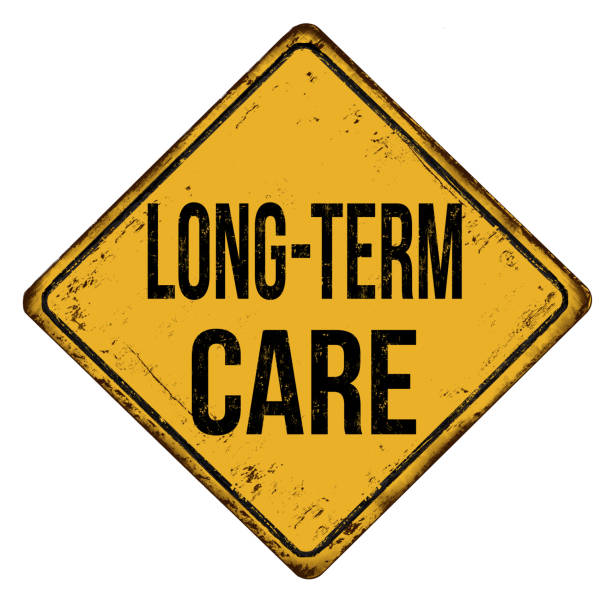What's the latest with WA Cares, a new worker-funded program in the state that will benefit only some Washingtonians, regardless of their high- or low-income status and whether or not they have resources available for long-term-care (LTC) needs? Buckle up.
The Long-Term Services and Supports (LTSS) Trust Commission met from 1 p.m. to 4 p.m. Tuesday and voted on various recommendations to the Legislature to again tweak WA Cares in an attempt to make it more palatable to those paying 58 cents on every $100 they earn — for something they might never benefit from. I think the recommendations only remind us why WA Cares should be repealed. The program is not the right solution for Washingtonians who won’t need long-term care or qualify for the WA Cares benefit, nor is it the best solution for those who will. And many workers, including low-income ones, are being harmed by the new payroll tax.
Highlights from the meeting follow:
— I think the biggest takeaway, one that will change eligibility with WA Cares for all workers paying into the program, was the recommendation the commission will be making to increase the work requirement needed to gain a qualifying year in WA Cares. The requirement would go from 500 to 1,000 hours a year. (Reminder, a worker needs to pay into WA Cares for 10 or more years, without a break of five or more years, and work 500 hours each of those years to meet the vestment criteria outlined in WA Cares. This provision will make the LTC benefit difficult to achieve for many family caregivers.)
I thought maybe this recommendation that was voted on affirmatively would be limited to workers who seek a portable benefit, if one becomes available. Not so. Ben Veghte, director of WA Cares, confirmed for me that the recommendation is for all workers. (Read more about the portability recommendation below.)
— The Employment Security Department (ESD) continues to be impressed by its outreach and communication efforts. Press releases it sent out resulted in positive media coverage, the commission was told. (The state's aggressive marketing campaign to try to get people to like WA Cares is part of the reason costs for the program keep increasing.)
— The number of self-employed workers voluntarily choosing to opt into the program is 355, ESD reported. They will continue to be pursued. They are not automatically required to pay the tax for WA Cares as W2 employees are. (Nor do they have the chance to qualify for a benefit unless they voluntarily opt into WA Cares.)
— The number of workers on non-immigrant visas who have applied for an exemption from the WA Cares tax since they were able to in January is 24,495. These non-residents are considered among the least likely to ever qualify for the WA Cares benefit. They are one of only four groups of workers who are still able to seek an exemption. The others are workers who live out of state, military spouses and veterans with a 70% or higher service-connected disability.
— The Office of the State Actuary anticipates the next baseline analysis of the future solvency of WA Cares, conducted by Milliman, an independent risk-management firm, to be filed in the fall of 2024. Solvency is dependent on many moving parts, Milliman explained. Economic assumptions will be updated, as will demographic changes in the state’s population and the number of additional exemptions granted after January 2023.
— Minimum provider qualifications, as well as requirements for equipment, travel and home modifications that WA Cares’ benefit recipients might want to use money for, were discussed. They were then recommended and voted on affirmatively by the commission.
— Also approved for moving forward to lawmakers were workgroup recommendations about the portability of the WA Cares benefit. Those included the incorporation of a “90-day forward certification of need," adoption of a HIPPA-style benefit threshold for out-of-state residents and allowing the state investment board to invest trust reserves in a diversified portfolio, including equities (which would require voter approval of a constitutional amendment similar to one that failed in 2020). Further, the recommendations include requiring individuals to contribute to WA Cares for three years in the state before becoming eligible to participate in portability and, finally, increasing the work requirement to earn a qualifying year with WA Cares from 500 to 1,000 hours for all WA Cares taxpayers, as mentioned before. Risk-management framework would be regularly monitored for the impact of portability on program solvency.
Summing up
Throughout yesterday’s meeting were reminders that there is a lot of uncertainty and many unknowns about WA Cares’ financial shape. It’s a new program. For that reason, I was surprised to see any recommendation for a portable coverage option. Many people are clamoring for one, but a portability option has been seen as likely to hurt the fund’s ability to pay its way.
A cost-offset workgroup seems to have threaded the needle to make portability possible — but with more hurdles to benefit eligibility. Eligibility is already riddled with requirements that will make the WA Cares benefit off-limits for many workers paying in, including, right now, in-state residency, vesting and health requirements.
I worry that with or without portability, the solvency picture for WA Cares will require the tax rate of .58% to increase or the lifetime benefit decrease. That lifetime benefit of $36,500 is already inadequate for most people who have LTC costs.
My worry has probability on its side: The state’s payroll tax for paid family and medical leave (PFML) has risen from .40% to .80% in its short lifetime. As for the workers’ compensation payroll tax, a story from The (Tacoma) News Tribune this morning says that a new proposal from the state Department of Labor and Industries would have workers and employees paying an additional $65 per year for each full-time employee, a 4.9% increase from current workers’ compensation rates.
Income tax free?
It’s getting harder to say Washington is a state without an income tax. Payroll taxes feel like income taxes. And they come on top of property tax, a burdensome carbon tax that has us paying the second-highest amount for fuel in the nation, a new capital gains tax, a high sales tax — which is a highly regressive tax that Democrats have refused to slash, even in times of inflation with state budget surpluses — and others.
For all these reasons, and because of the ever-complicated qualification criteria for this new, state-imposed long-term-care program, as demonstrated Tuesday, WA Cares needs to be repealed. We’re hurting the state’s workers, including low-income ones. In some cases, they are forced to give a portion of their income over to benefit others — others who may not be in need of taxpayer generosity.
A safety net for people needing long-term care already exists in Medicaid. Lawmakers should be busy strengthening and protecting it instead of creating a safety net for people not in need.
Repeal WA Cares and opt-in legislation being sought
Next legislative session, there will be bills to kill WA Cares. They are not expected to be heard or considered by majority Democrats who can control such things, however. A July 11 Seattle Times story reported that Democrats didn’t think that even a recent proposal to let workers choose whether they wanted to participate in WA Cares had a shot. “You can count votes. I can count votes,” Sen. Karen Keiser, D-Des Moines, told the paper. She added, “I don’t see how that works.”
Another path to making WA Cares optional is an initiative to the Legislature from Let’s Go Washington. The group is collecting signatures for Initiative 2124.
For now and possibly for all of your working years — regardless of how young or old you are — you can look at your paycheck to see how much your pay is being decreased by the government for a program you are told gives you “peace of mind," even though it doesn’t. A calculator showing how much WA Cares will cost you over your lifetime is available on WA Cares’ website.






